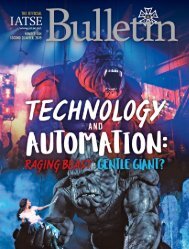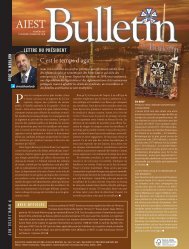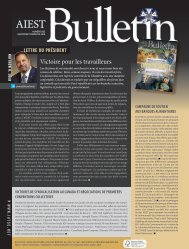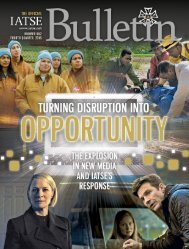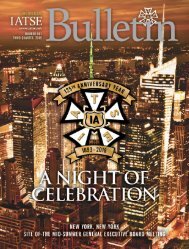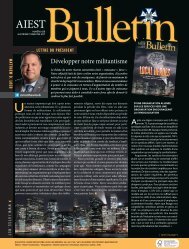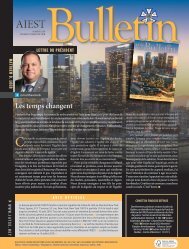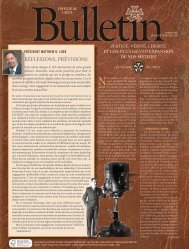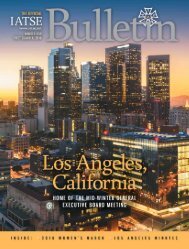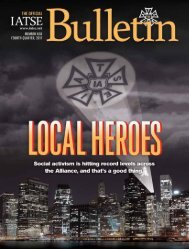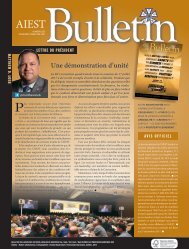IATSE-2nd2018_web
You also want an ePaper? Increase the reach of your titles
YUMPU automatically turns print PDFs into web optimized ePapers that Google loves.
THE PRODUCERS’ HIRING HALL<br />
In 1924, the producers created the Mutual Alliance of<br />
Studio Employees (MASE) — a company hiring hall for craft<br />
workers and technicians designed to circumvent the theatrical<br />
unions. This only added to the difficulties facing the IA workers<br />
in Hollywood. In 1925, IA International Representative Steve<br />
Newman described the situation:<br />
Conditions here are deplorable. We have more men<br />
out of work than we have had at any time since we<br />
organized. MASE are sending men out every day into<br />
the studios… MASE organization has the support<br />
of bosses as well as managers of studios, and their<br />
representative is allowed to go into any lot at any time.<br />
Their [MASE] men are called first and retained when<br />
our men are laid off. … Members of the Alliance have<br />
been approached by bosses on the lots to sign a long<br />
term contract with the company, but must agree to<br />
stay on the job in case of trouble and renounce their<br />
union affiliation. When they refuse, they are laid off<br />
that night.<br />
For IA members this was just another form of the yellow dog<br />
contract — join the company union or lose your job.<br />
ALLIANCE RESPONDS —<br />
THE STUDIO BASIC AGREEMENT<br />
In the face of such brutal abuse, the Los Angeles unions<br />
briefly put aside their differences. The IA and Carpenters Local<br />
1692 signed an agreement restoring prop building and miniature<br />
set work to Local 37. In 1926, <strong>IATSE</strong> signed new jurisdictional<br />
agreements with the IBEW, thus stopping cold the producers’<br />
“divide and conquer” strategy — at least temporarily.<br />
The Alliance and the other unions threatened to strike. The<br />
IA, with its projectionists, had the power to make such a strike<br />
truly damaging. On November 29, 1926, the producers and the<br />
unions signed the first Studio Basic Agreement — not so much<br />
a contract but an agreement to negotiate wages, benefits, hours<br />
and working conditions, as well as grievances.<br />
The Studio Basic Agreement would become the cornerstone<br />
of labor relations in Hollywood and still exists to this day.<br />
It was a major breakthrough in Hollywood labor relations —<br />
and just in time. The “talkies” were about to burst on the scene,<br />
with a whole new field of work opening up to entertainment<br />
industry workers.<br />
THE MOVIES SPEAK<br />
When Al Jolson sang to his “Mammy” in The Jazz Singer<br />
ANIMATION AND IMAGINATION<br />
The early cartoonists were among the most innovative and creative people working in<br />
movies. In fact, some of the most remarkable advances in sound came through animation,<br />
and most of these were produced by Walt Disney. The first sound cartoon by Disney was<br />
Steamboat Willie, in 1923. The cartoon used Cinephone, the optical sound system, and<br />
was remarkable for its integration of picture and sound.<br />
Despite these achievements, the cartoonists had to battle the anti-union animosity of<br />
the studios and found their early efforts at organizing thwarted at every turn. Finally, after a<br />
long struggle, Local 839 was chartered in Hollywood and Local 841 was chartered in New<br />
York. The screen cartoonists at last had union representation as part of <strong>IATSE</strong>.<br />
25




